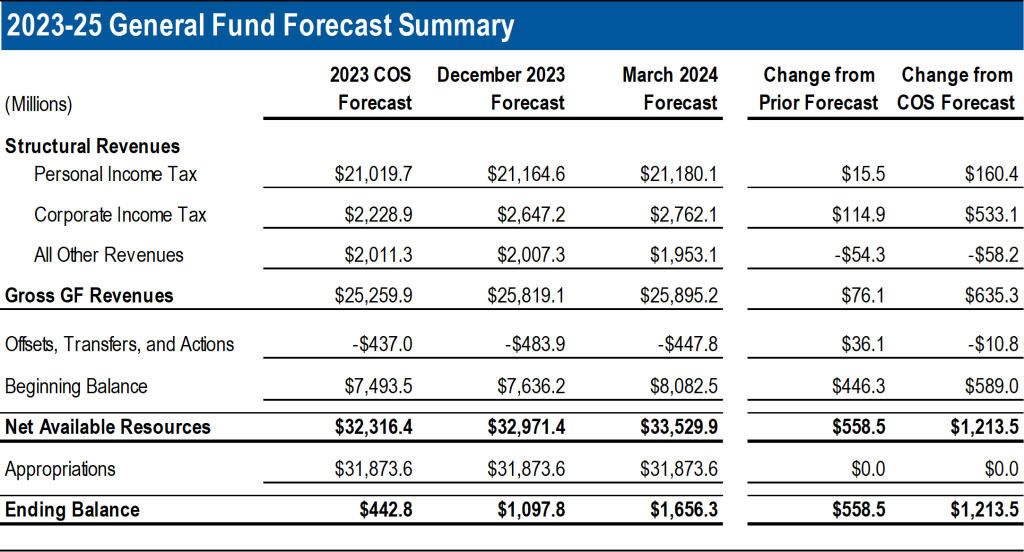This morning our office released the latest quarterly economic and revenue forecast. For the full document, slides and forecast data please see our main website. Below is the forecast’s Executive Summary and a copy of our presentation slides.
Historically, inflationary economic booms have not ended well. The pandemic is increasingly looking like the exception. Inflation has cooled and is near the Federal Reserve’s target. The labor market rebalanced last year. However, strong recent data in terms of consumer spending, job gains, and real GDP growth raise the possibility of inflation rebounding in the quarters ahead. The Fed is indicating they will cut interest rates this year, but appear to be in no real hurry given the economic strength.
Economic growth is combination of the number of workers and how productive each is. So far this cycle, Oregon’s productivity gains have outpaced the nation, while local job growth is in the middle of the pack across states. The outlook for labor and capital are on differing, structural trends. Labor is both cyclically strong today, and structurally tight due to demographics. The recently released 2023 population estimates show that Oregon’s population continued to stagnate during the pandemic. Our office has lowered the population outlook as a result. In the decade ahead Oregon’s population is expected to rebound, but grow at just 0.6 percent per year. This lower population forecast feeds directly into a relatively smaller labor force and a bit less personal income earned in the years ahead.
The good news is that between the start-up boom, increased federal investment, and potential of generative AI, productivity is set to increase faster in the decade ahead. These gains will boost the overall economy and make up for slower labor growth. Even so, one of the key dynamics for stronger business investment is a tight labor market. When workers are scarce, and expensive, firms are more willing, if not forced to invest in labor-saving technology and processes.
Oregon’s state revenue outlook remains stable heading into the personal income tax filing season. The underlying economic outlook is relatively unchanged, and collections are tracking closely to expectations. Compared to the December 2023 forecast, General Fund revenues are raised $76 million. However, total available resources are increased $558 million in large part due to accountants closing the books on the previous 2021-23 biennium. Unspent appropriations from last biennium revert to the General Fund, boosting resources in 2023-25.
Although overall revenue collections are matching expectations, there have been some notable surprises. The most significant of which is the persistence of the six-year boom in Oregon’s traditional corporate income and excise taxes. Tax collections have far outstripped growth in underlying corporate profits. The longer the surge in collections persists, the more likely it becomes that tax reforms enacted at the federal and state levels have permanently increased Oregon’s corporate tax base, and that the step up in collections will remain with us going forward.
The modest reduction in expected population and job gains reflected in the underlying economic outlook filters through to a somewhat weaker long-term forecast for personal income taxes. That said, these changes do not change the general nature of the revenue forecast, with the largest reduction in expected General Fund resources amounting to less than one percent of revenue in the 2029-31 budget period.
See our full website for all the forecast details. Our presentation slides for the forecast release to the Legislature are below.


The $589 in carry-over funds from 21-23 seems line a extraordinarily high number. How does this amount compare to carry-over funds in prior bienniums? Also, did most of this arise from unfilled positions, services and supplies or other factors?
By: Tim Nesbitt on February 7, 2024
at 10:28 AM